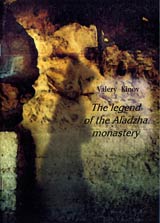- Американска и канадска художествена литература
- Антикварни книги
- Антични автори
- Балканска художествена литература
- Библиофилски издания
- Биология
- Българска художествена литература
- География, пътеводители
- Детска литература
- Европейска художествена литература
- Езикознание, лингвистика, семиотика, филология
- Езотерика, духовни учения
- Здравна и медицинска литература
- Земеделие и животновъдство
- Изкуство
- Икономическа литература
- История
- Календари, сувенири
- Компютърна литература
- Кулинарна литература
- Културология, етнология и фолклор
- Латиноамериканска художествена литература
- Литературна критика
- Литературна периодика
- Медии и комуникации
- Нобелова награда за литература
- Политология
- Правна литература
- Православна литература
- Психология
- Речници, справочници, енциклопедии
- Социология
- Спорт, хоби
- Точни науки, техника
- Учебна литература, Педагогика
- Философия
- Художествена литература от Азия, Африка и Австралия

The Legend of the Aladzha Monastery
Продуктов номер: 8594Изчерпана
Автор: Валери Кинов
Категория: Българска история на чужди езици | География, пътеводители
Издателство: Славена
Състояние: Нова книга
24 страници
меки корици
Първо издание: 1999
Народност: българска
Artist – Vladimir Dimitrov The rock monasteries have their own place in the mainstream of centuries-old Bulgarian lands' cultural heritage. As they stand now, carved or shaped in high rock past various historical periods, these miraculous landmarks of Christian culture are still studied both in matters of their origin and diffusion and monks' spiritual pursuit and insight. Concerning their diffusion, historians have generally agreed to link initial cells' carving to first Christianity wave on the Balkan peninsula in late Antiquity (4th - 6th c. AD). However, some evidence exist tracing the same origin back to pagan period, based namely on the developed religious rites in caves and rock niches practiced by the local tribes -the Thracians. With the emergence of the Bulgarian state during VIIth c. AD, most of the existing rock monastic communities are left empty. Only with the official adoption of Christianity by the Bulgarian state in 864 AD, monks have a chance for their revival. The process continues during the Byzantine rule on Bulgarian lands (11th - 12th c. AD). The Second Bulgarian Kingdom (13th - 14th c. AD) witnesses flourishing of monasticism and rock monasteries. Numerous reliable data testify the renewal of many of the old rock monasteries and foundation of new ones. The one located near Varna, known as Aladzha Monastery, is part of the revival. Situated in a beautiful nature spot, it has an early attraction to the interest of researchers and the public. The first mention of the site in written sources is by the Russian writer Viktor Tepljakov in his book "Letters from Bulgaria", published in 1832. However professional research in the rock monastery itself and its surroundings start only at the end of the same century by the first Bulgarian archeologists - the brothers Carel and Hermengil Schkorpil. Close to the monastery's site, the brothers study a similar cut-in-the-rock complex and gave it the name - "the Catacombs". East of its site, they describe the remains of an early-Christian basilica, a small fortress and some buildings from the late Antiquity. The foundation of Aladzha monastery is still undated. However, comparative study of the surviving frescos in the chapel prove that the flourishing of the monastic community took place in 13th - 14th centuries.